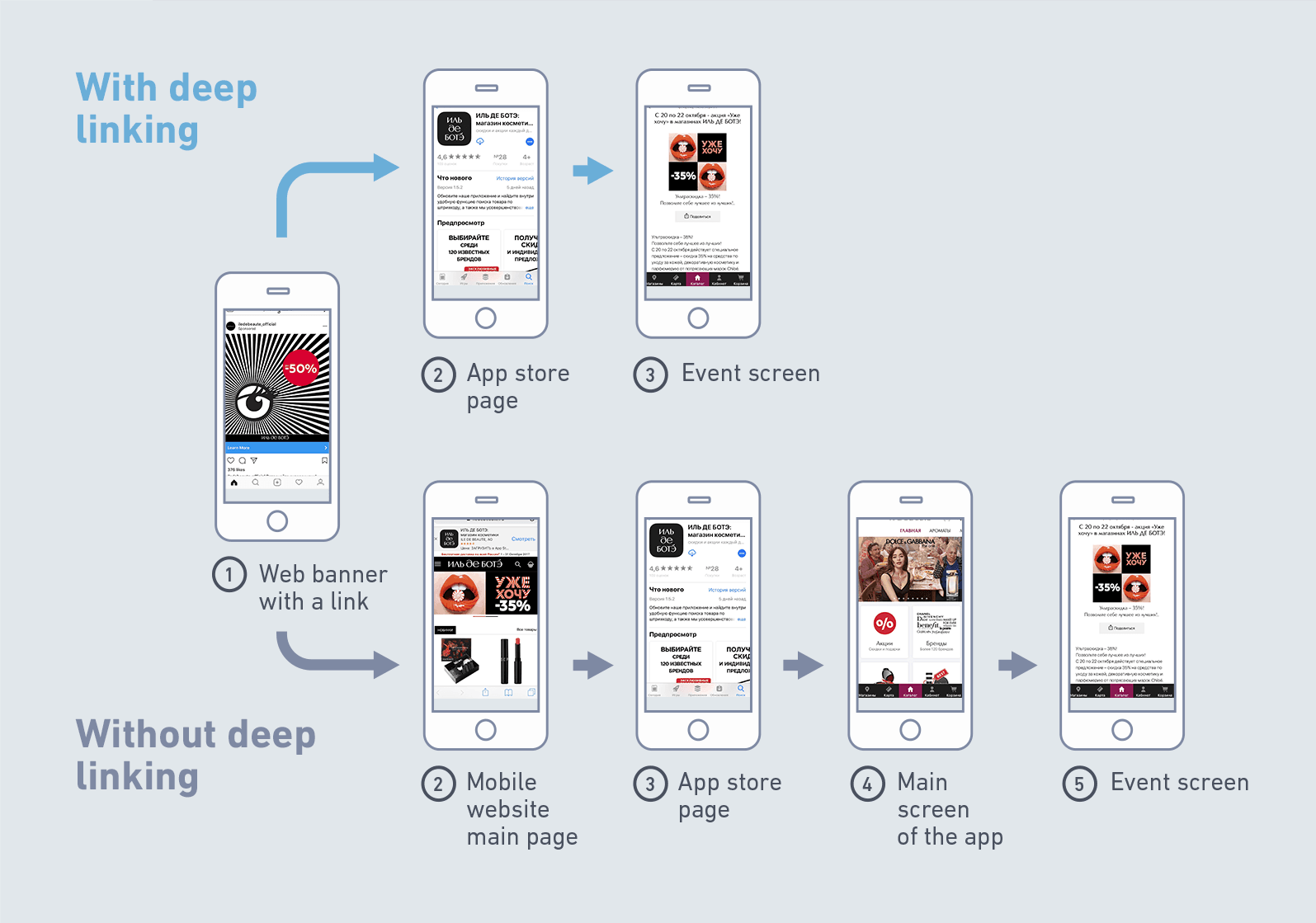Deep hot linking has become a pivotal concept in today's digital landscape, influencing how content is shared and consumed across the web. Whether you're a website owner, digital marketer, or content creator, understanding the mechanics and implications of deep hot linking is crucial for protecting your assets and optimizing your online presence. This article will delve into the intricacies of deep hot linking, offering actionable insights and expert advice to help you navigate this complex topic.
In the vast world of the internet, deep hot linking has sparked debates about copyright, website performance, and ethical practices. For website owners, it represents both a challenge and an opportunity. While it can lead to unauthorized use of your resources, it also offers a way to enhance user experience when used responsibly. This guide aims to provide a comprehensive overview of deep hot linking, ensuring you're well-equipped to make informed decisions.
As we explore this topic, we'll examine the technical aspects, legal implications, and best practices associated with deep hot linking. By the end of this article, you'll have a clear understanding of how to leverage this technique while avoiding potential pitfalls. Let's dive in and uncover the secrets behind deep hot linking.
Read also:Unveiling The Extraordinary Journey Of Frederick Dump
Table of Contents
- What is Deep Hot Link?
- History of Deep Hot Link
- Technical Aspects of Deep Hot Link
- Legal Implications and Copyright Concerns
- Benefits and Risks of Deep Hot Link
- Best Practices for Deep Hot Link
- Preventing Unauthorized Use of Your Content
- SEO Impact of Deep Hot Linking
- Real-World Examples and Case Studies
- Future Trends in Deep Hot Linking
What is Deep Hot Link?
Deep hot linking refers to the practice of embedding or linking directly to a specific file or resource on another website, such as images, videos, or documents, without the permission of the hosting site. Instead of linking to the homepage or a general page, a deep hot link points directly to the desired content, bypassing any intermediary pages.
How Does Deep Hot Link Work?
When you embed an image or media file from another site using a direct URL, your website essentially pulls the resource from the original server. This means the hosting site bears the bandwidth costs and computational load, which can lead to performance issues if the resource is accessed frequently.
Why is Deep Hot Link Important?
Understanding deep hot linking is essential for maintaining the integrity of your website and respecting the rights of others. By knowing how it works, you can take steps to protect your own content while ensuring your website complies with legal and ethical standards.
History of Deep Hot Link
The concept of deep hot linking dates back to the early days of the internet when websites began to share content more freely. Initially, it was seen as a convenient way to incorporate external resources into one's own site. However, as the web grew in complexity, issues related to bandwidth theft and copyright infringement began to surface.
Evolution of Deep Hot Linking
Over the years, deep hot linking has evolved from a simple sharing mechanism to a sophisticated technique used by both legitimate and malicious actors. Advances in technology have made it easier to detect and prevent unauthorized linking, but challenges remain in balancing accessibility with protection.
Technical Aspects of Deep Hot Link
From a technical standpoint, deep hot linking involves embedding external resources using HTML tags like or
Read also:What Is Freeze Dance A Comprehensive Guide To The Fun And Engaging Activity
Common Techniques
- Embedding images using the
tag
- Embedding videos using the
- Linking directly to downloadable files
Bandwidth and Performance Considerations
One of the primary concerns with deep hot linking is the strain it places on the hosting server. When multiple sites hot link to the same resource, the hosting site may experience increased bandwidth usage and slower load times, impacting user experience.
Legal Implications and Copyright Concerns
Deep hot linking raises significant legal questions, particularly regarding copyright and intellectual property rights. In many jurisdictions, embedding someone else's content without permission can be considered a violation of copyright law.
Case Law and Precedents
Several high-profile cases have addressed the legality of deep hot linking. For example, the European Court of Justice ruled that embedding content through framing does not infringe copyright if the content is freely accessible on the internet. However, this ruling may not apply universally, and local laws can vary significantly.
Benefits and Risks of Deep Hot Link
While deep hot linking offers certain advantages, such as ease of content sharing and enhanced user experience, it also poses risks that must be carefully managed.
Benefits
- Improved user engagement through rich media content
- Simplified content integration across platforms
- Increased discoverability of shared resources
Risks
- Unauthorized use of copyrighted material
- Excessive bandwidth consumption
- Potential legal liabilities
Best Practices for Deep Hot Link
To ensure responsible use of deep hot linking, website owners and content creators should adhere to established best practices.
Obtaining Permission
Always seek permission from the content owner before embedding their resources. This demonstrates respect for their intellectual property and reduces the risk of legal disputes.
Using Thumbnails and Links
Instead of embedding the full resource, consider using thumbnails or preview images that link back to the original source. This approach provides users with a preview while directing them to the hosting site for the full experience.
Preventing Unauthorized Use of Your Content
Website owners can take proactive measures to protect their content from unauthorized deep hot linking.
Implementing Hot Link Protection
By configuring your web server to block requests from external domains, you can prevent others from embedding your resources without permission. Most web servers, such as Apache and Nginx, offer built-in tools for implementing hot link protection.
Watermarking and Licensing
Adding watermarks to images and videos can deter unauthorized use, while clearly stating licensing terms helps set expectations for how your content can be used.
SEO Impact of Deep Hot Linking
Deep hot linking can have both positive and negative effects on search engine optimization (SEO). On one hand, it can increase the visibility of your content if others link back to your site. On the other hand, unauthorized embedding can dilute your SEO efforts by distributing traffic across multiple platforms.
Strategies for Maximizing SEO Benefits
To maximize the SEO benefits of deep hot linking, focus on creating high-quality, shareable content that encourages legitimate linking. Additionally, monitor your site for unauthorized hot links and address them promptly to maintain control over your digital assets.
Real-World Examples and Case Studies
Several real-world examples illustrate the impact of deep hot linking on businesses and individuals. For instance, a popular image hosting service reported a significant increase in bandwidth usage due to widespread hot linking, prompting them to implement stricter protection measures.
Case Study: [Insert Relevant Case Study]
[Insert detailed case study analyzing the effects of deep hot linking on a specific website or industry. Include data and statistics to support your analysis.]
Future Trends in Deep Hot Linking
As technology continues to evolve, so too will the practices surrounding deep hot linking. Emerging trends such as blockchain-based content verification and AI-driven copyright enforcement promise to reshape how we approach content sharing and protection.
Adapting to Change
To stay ahead of the curve, website owners and content creators should remain informed about the latest developments in digital rights management and adopt technologies that enhance both accessibility and security.
Conclusion
In conclusion, deep hot linking is a multifaceted concept with implications for website performance, legal compliance, and user experience. By understanding its mechanics, adhering to best practices, and protecting your own content, you can harness the power of deep hot linking while minimizing potential risks.
We encourage you to share your thoughts and experiences in the comments below. If you found this article helpful, please consider sharing it with others who may benefit from the insights provided. For more expert advice on digital marketing and web development, explore our other articles and resources.
Remember, staying informed and proactive is key to thriving in the ever-evolving digital landscape. Let's continue the conversation and work together to create a more secure and sustainable web environment for everyone.



